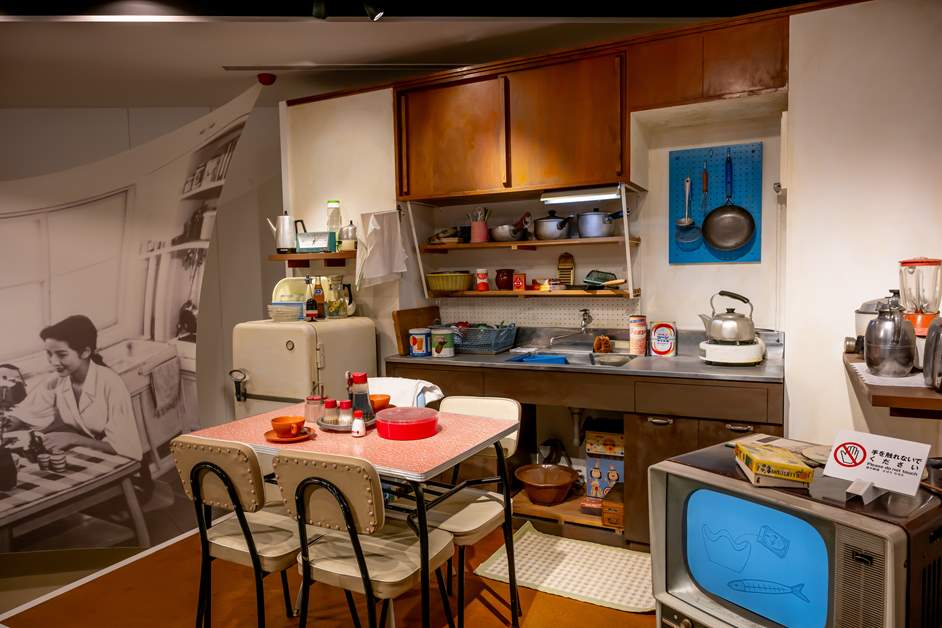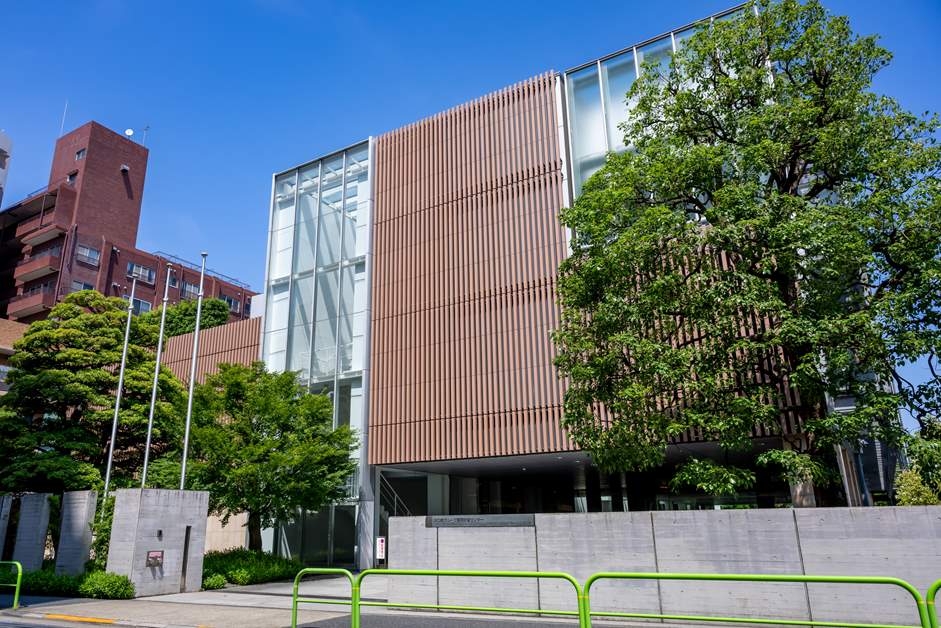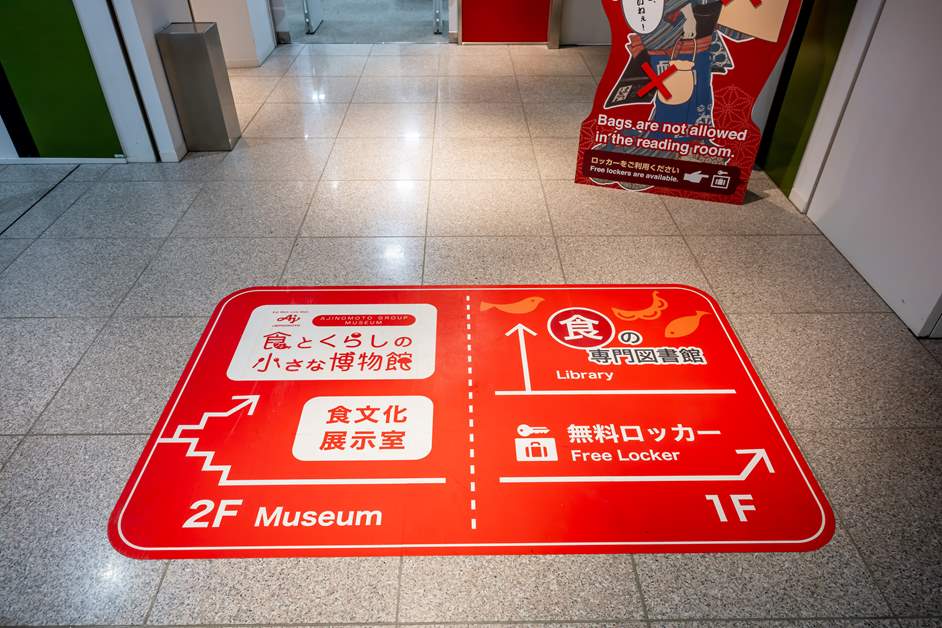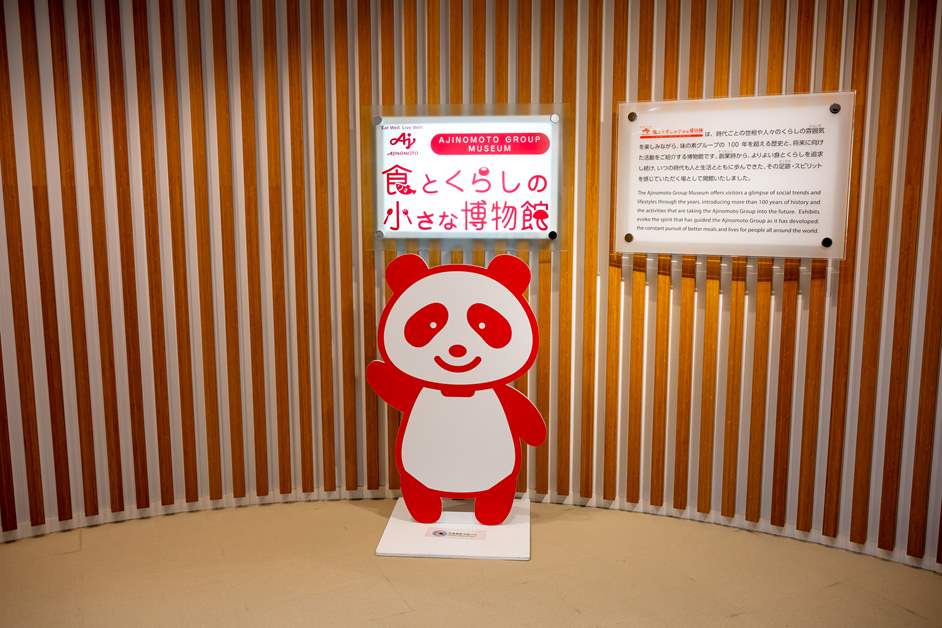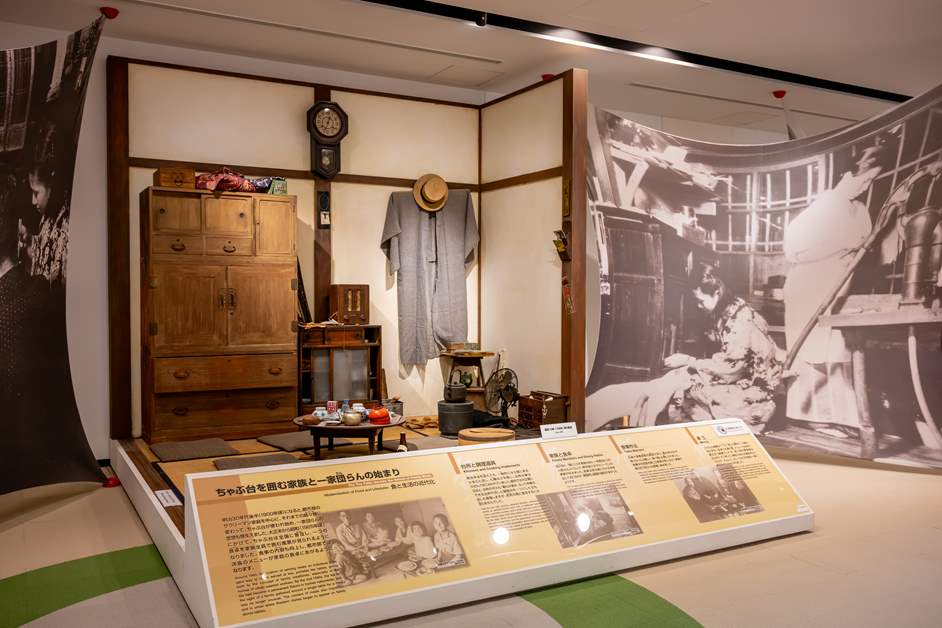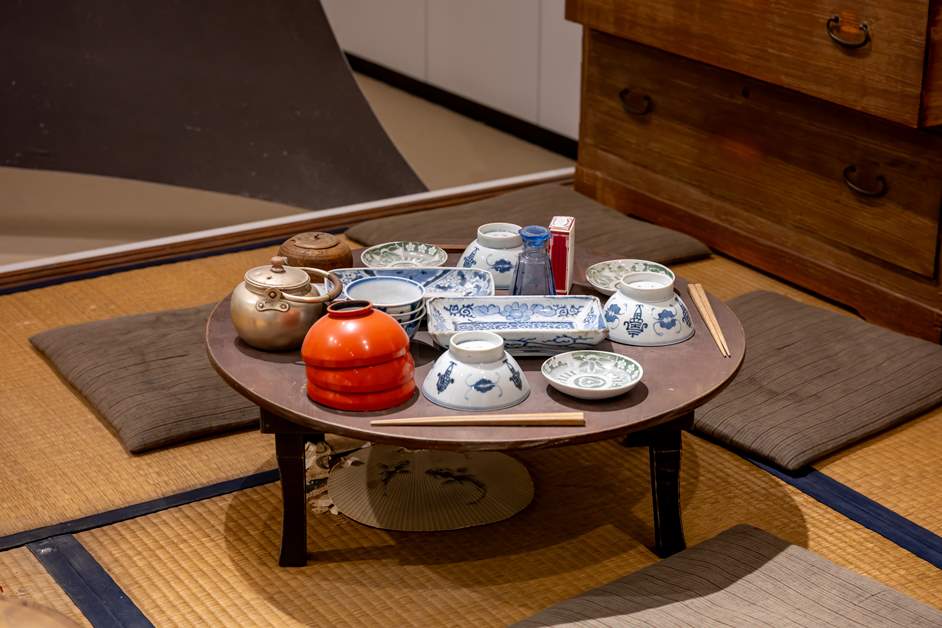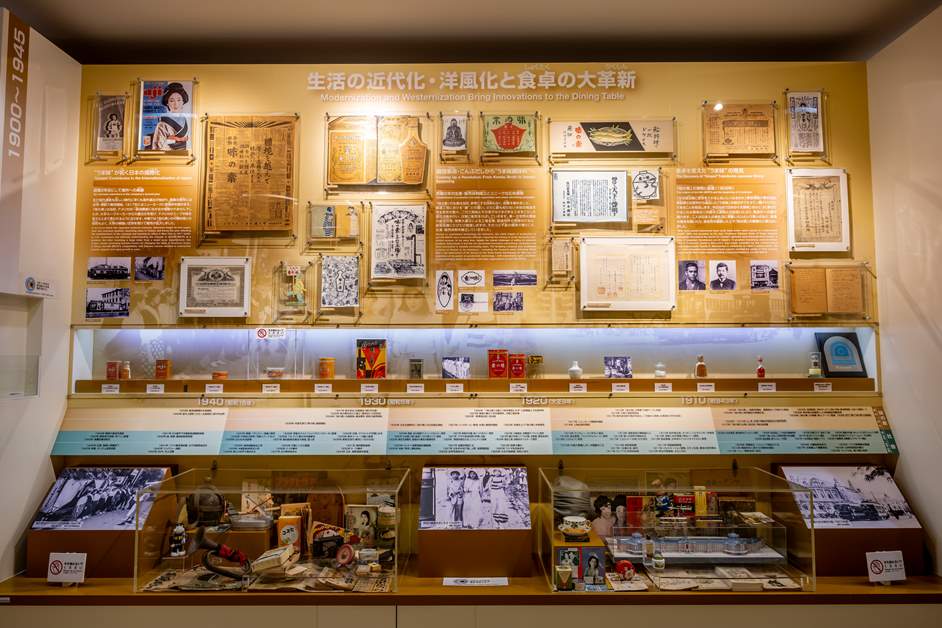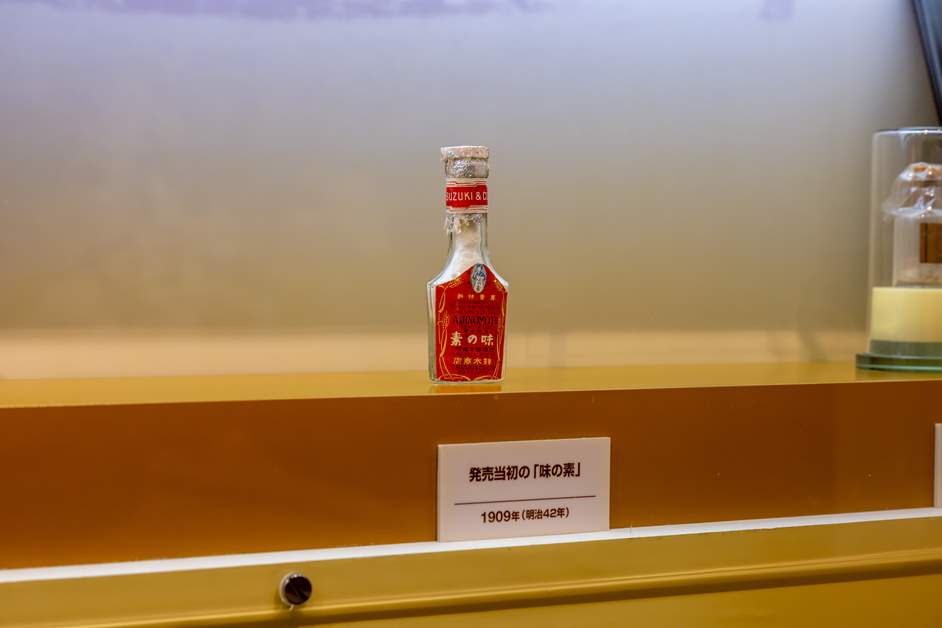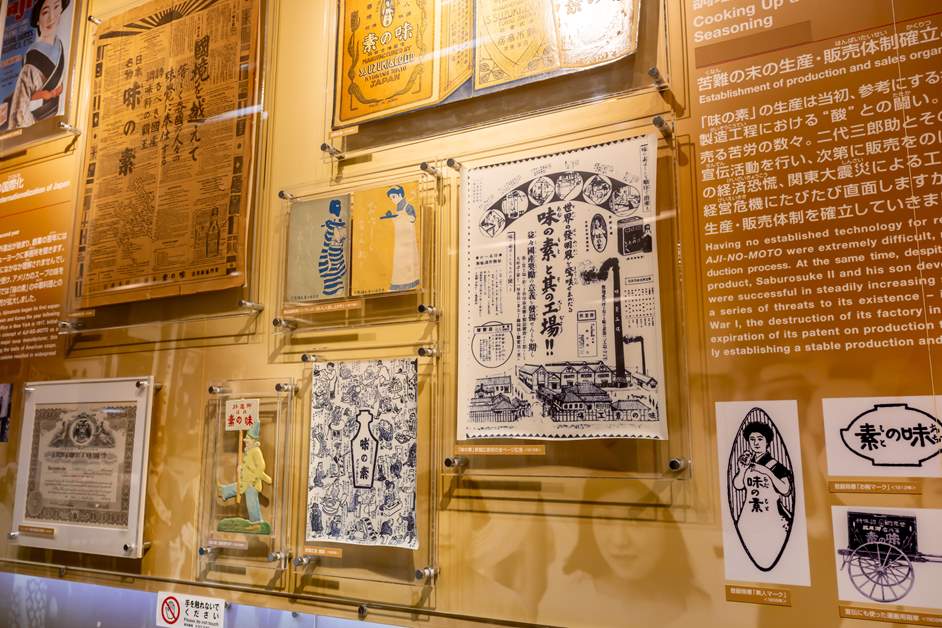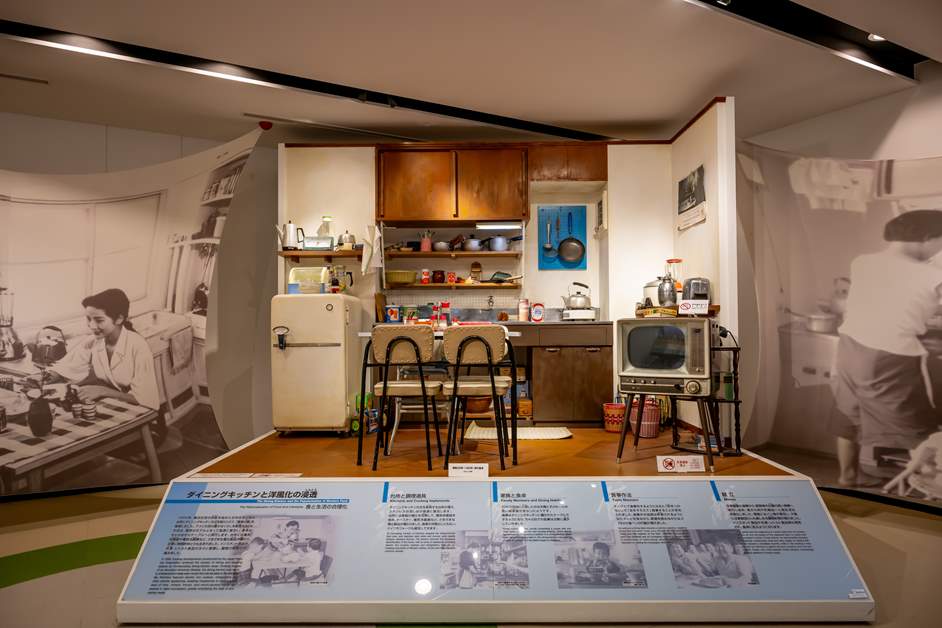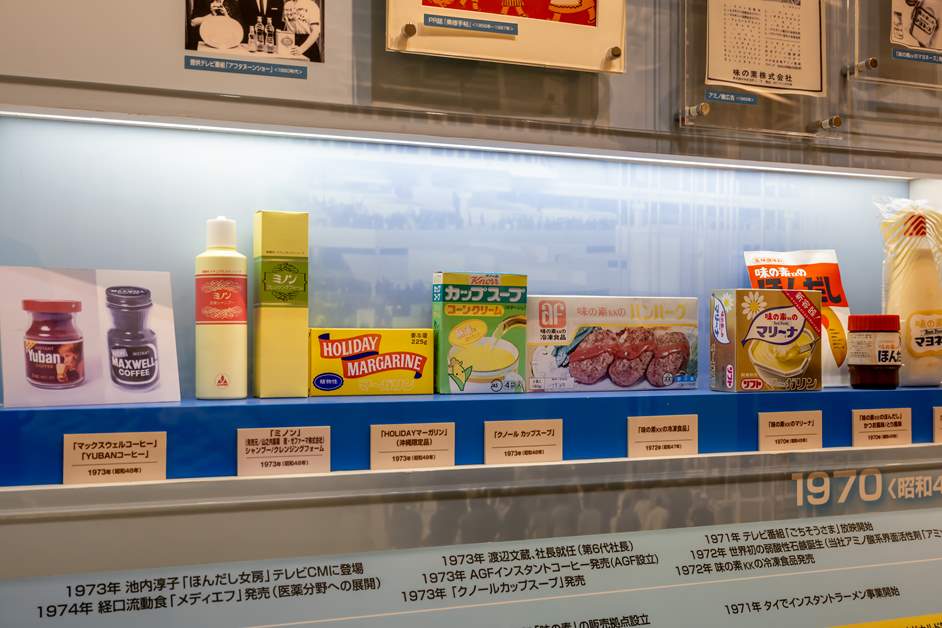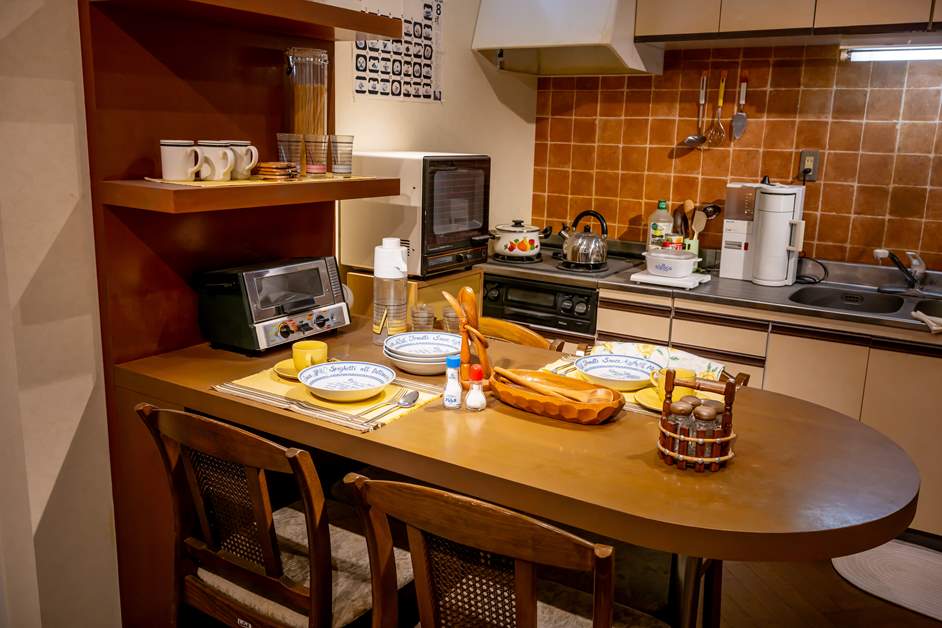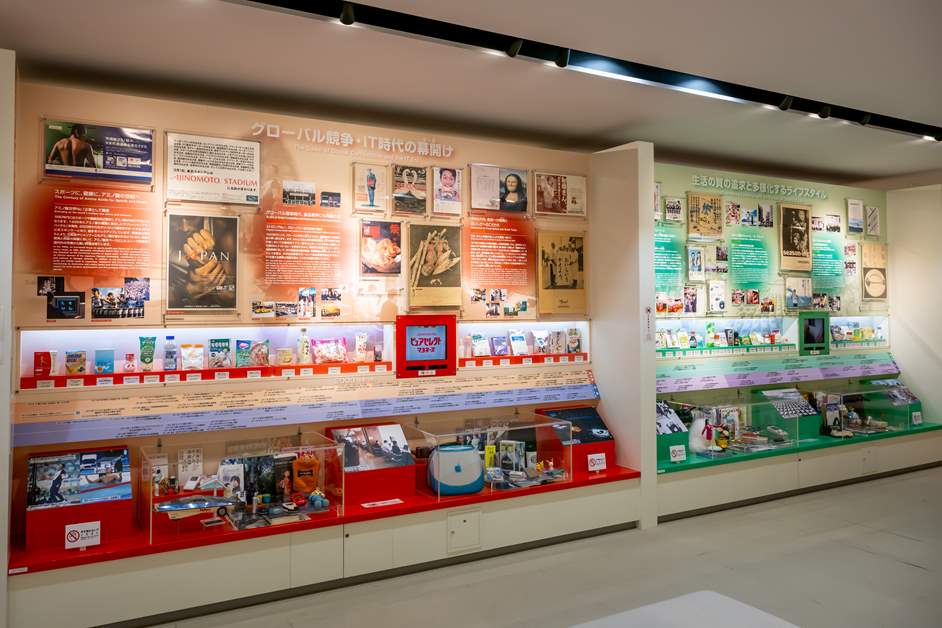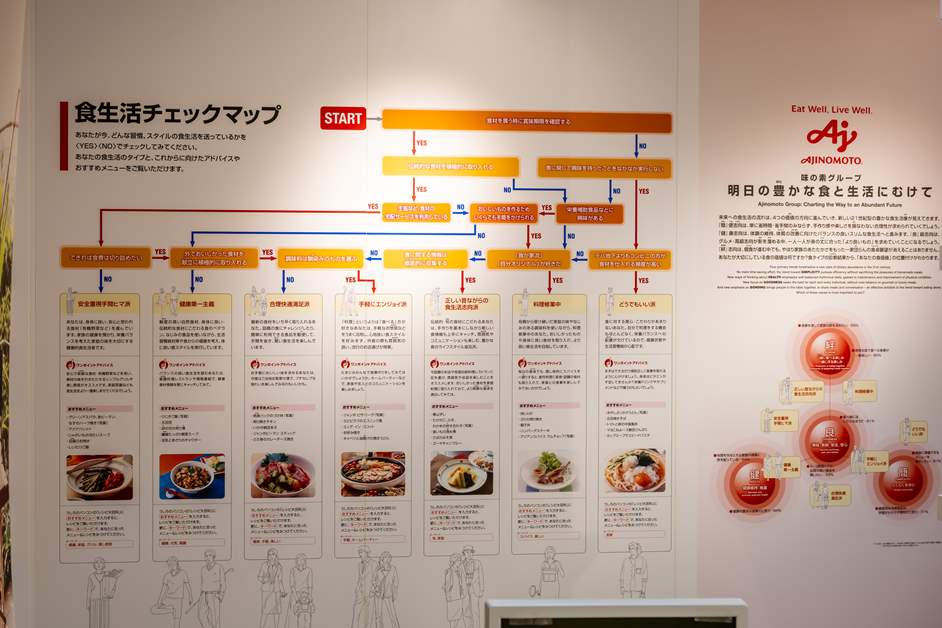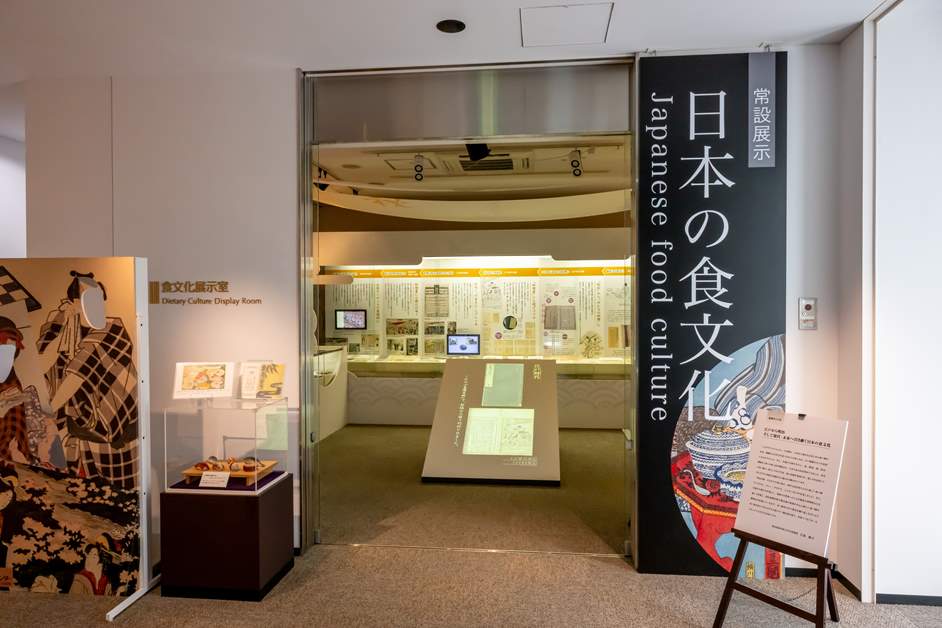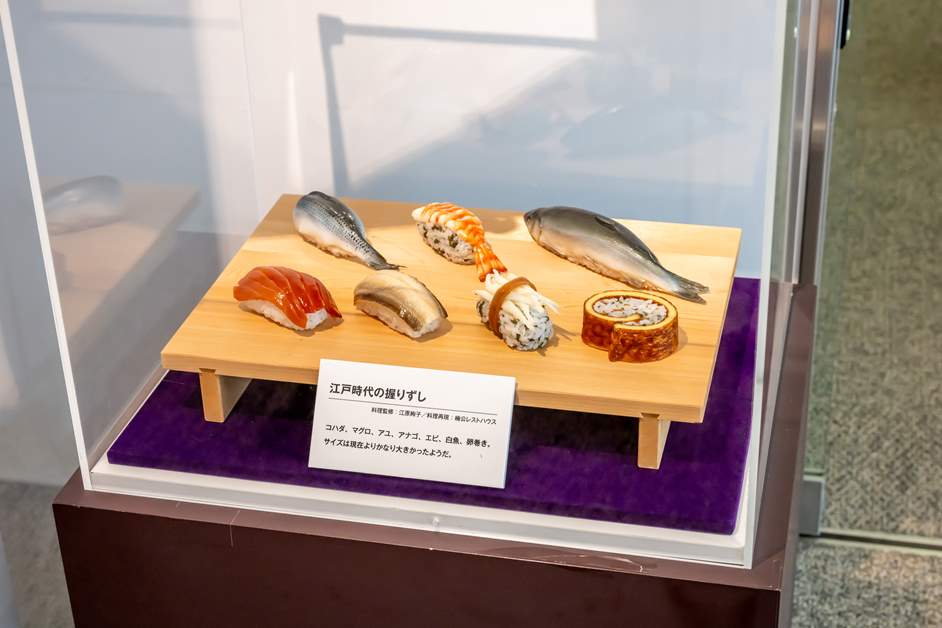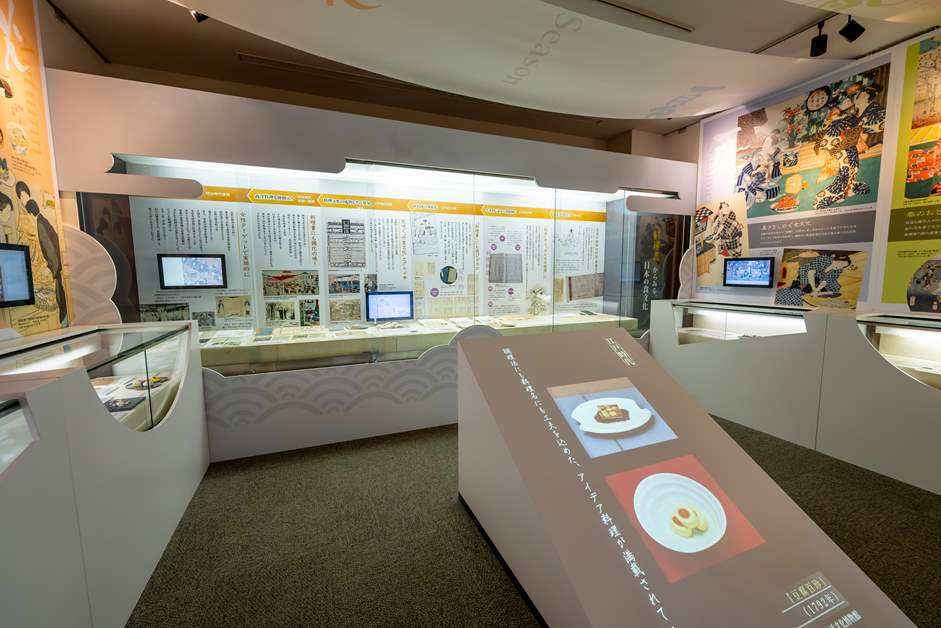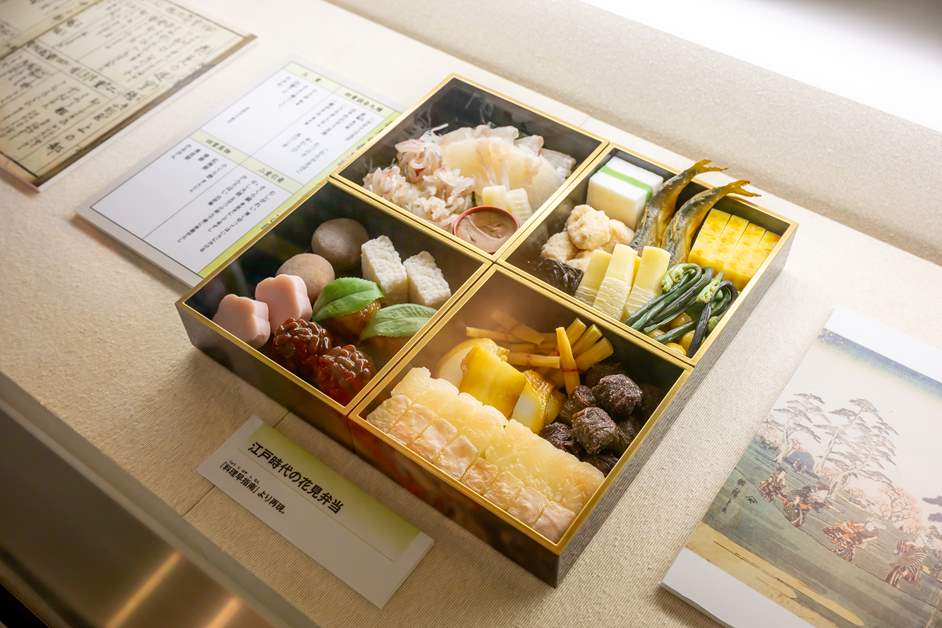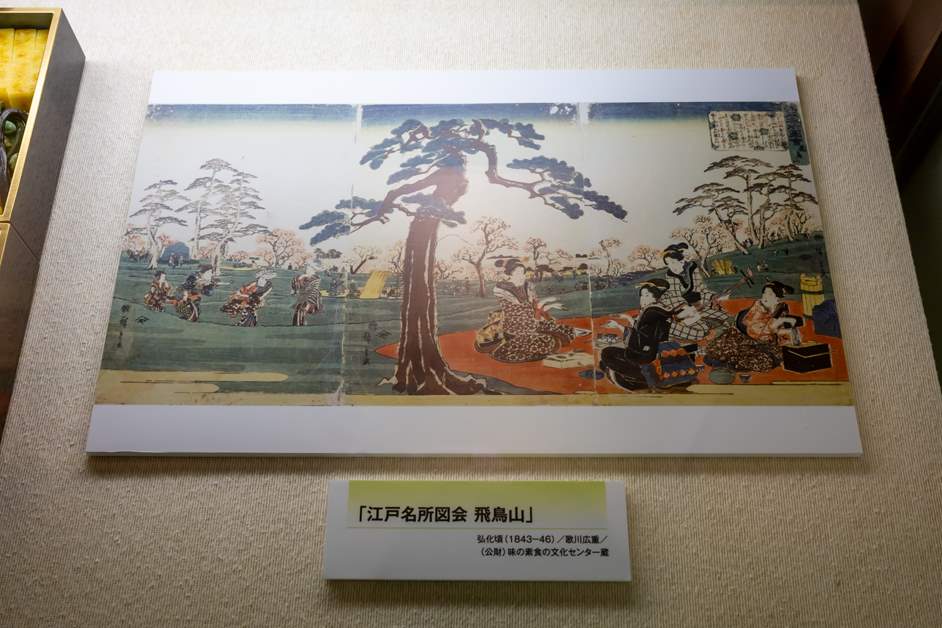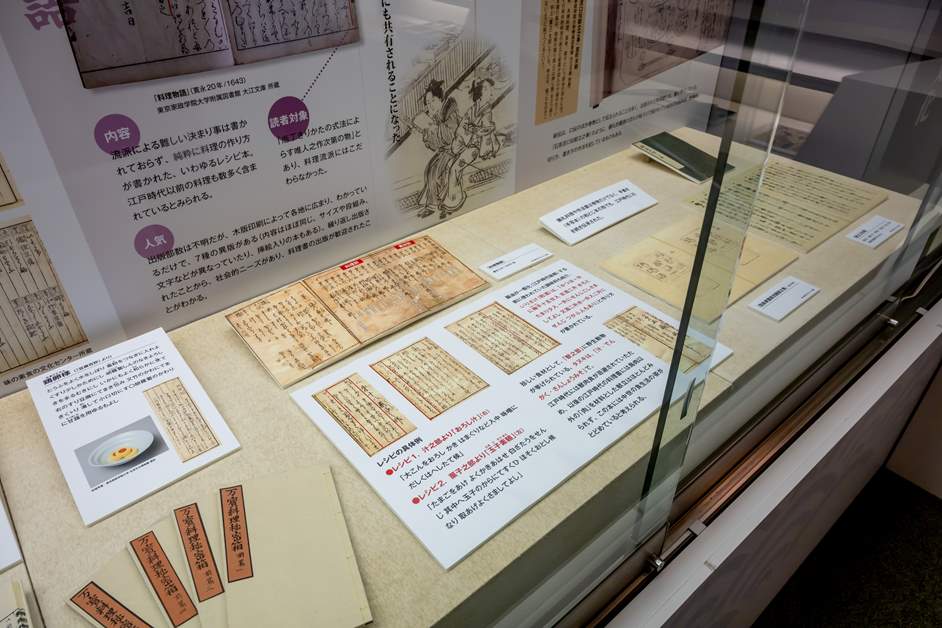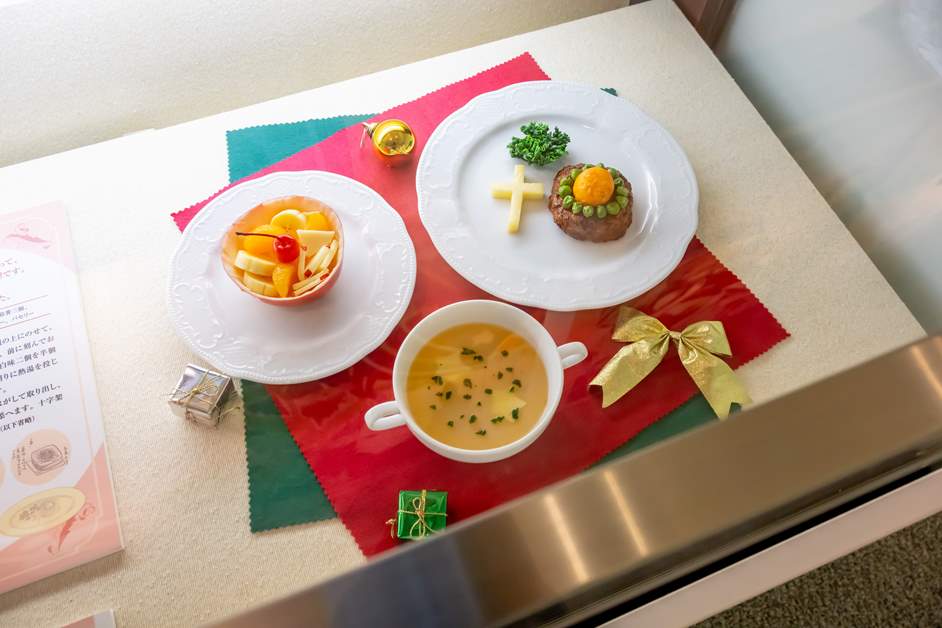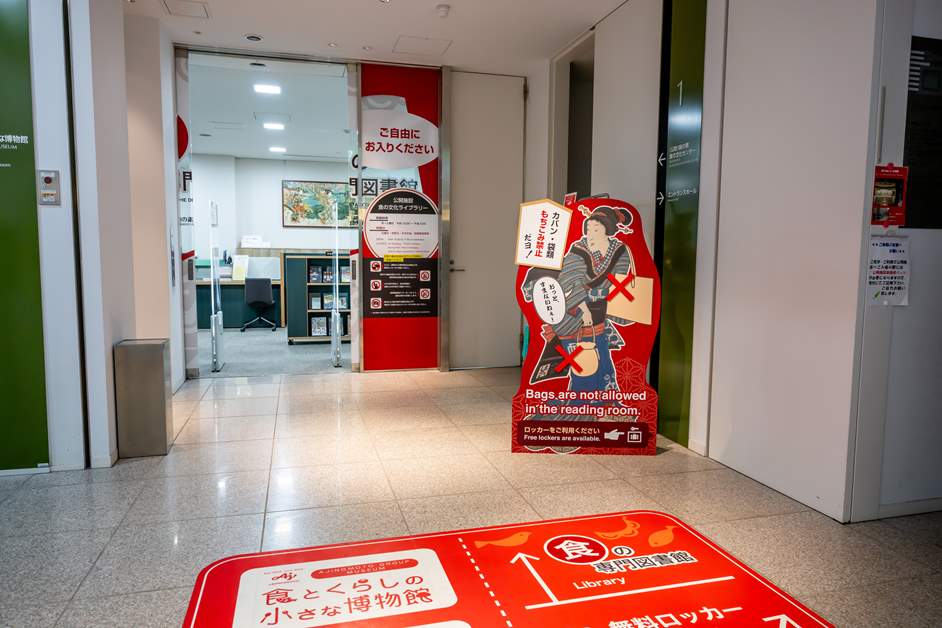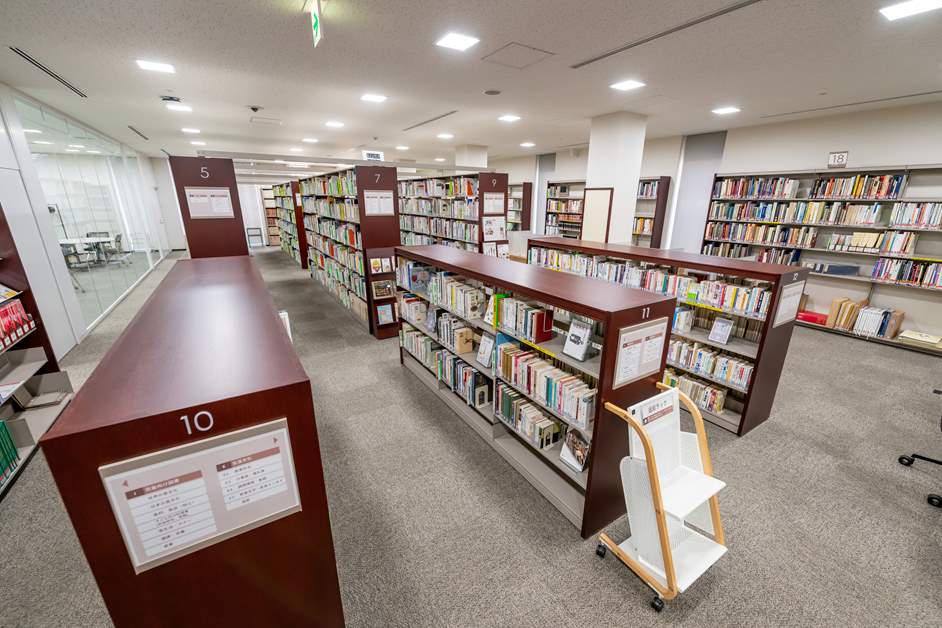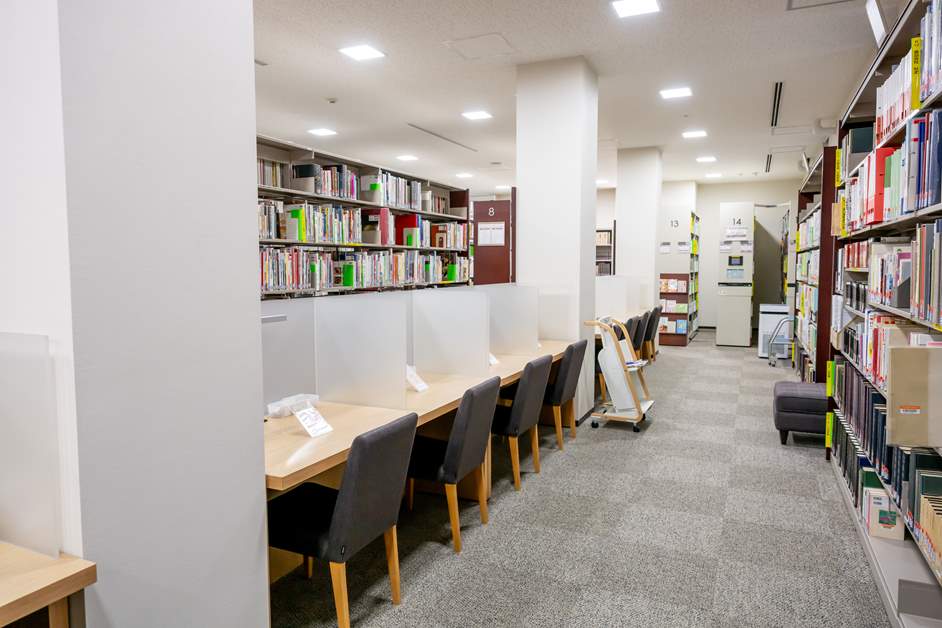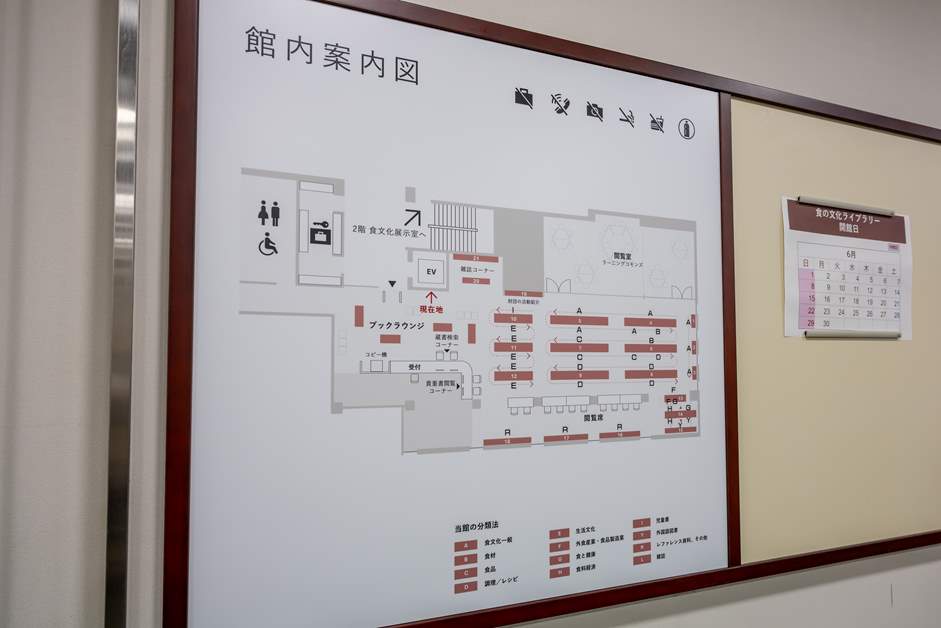Exploring the World of Food at Takanawa's "A Small Museum of Food and Daily Life" and "Food Culture Library"
The environment surrounding food is changing dramatically, with rising food prices and various issues concerning rice, sometimes called the "Reiwa Rice Riots." In times like these, it may be necessary to take a fresh look at "food." The Ajinomoto Group Takanawa Training Center in Takanawa 3-chome houses various facilities that convey the history and evolution of Japanese food culture. At "A Small Museum of Food and Daily Life," operated by Ajinomoto Co., Inc., you can learn about the 100-year history of the umami seasoning AJI-NO-MOTO® and the Ajinomoto Group. Additionally, at the "Food Culture Library," run by the Ajinomoto Foundation for Dietary Culture, you can browse over 45,000 specialized books on food. This time, we'll introduce the facilities within the Ajinomoto Group Takanawa Training Center, a true "food wonderland," and explore the depths of Japanese food culture.
A Small Museum of Food and Daily Life: Tracing the History of Food and the Ajinomoto Group
Built in 2004, the Ajinomoto Group Takanawa Training Center is about a 3-minute walk from Takanawadai Station on the Toei Asakusa Line. This location was originally purchased in 1916 by Saburosuke Suzuki II, the founder of Ajinomoto Co., Inc., and was used as his home and a temporary office. After the war, it became the "Ajinomoto Memorial Hall" and was used for employee training and other purposes.
Within the Ajinomoto Group Takanawa Training Center, three facilities are open to the public: "A Small Museum of Food and Daily Life," the "Food Culture Library," and the "Food Culture Exhibition Room." All of these facilities can be used free of charge.
A Small Museum of Food and Daily Life on the second floor introduces the history of the Ajinomoto Group and its activities for the future. At the entrance, we were greeted by "AJIPANDA®," the corporate character famous from the AJI-NO-MOTO® jars.
Domyoji urn made in Tokoname City, Aichi Prefecture
Stepping inside, a large pot displayed near the entrance catches the eye. This is a clay pot called a "Domyoji-game," which was said to be used in the early production of AJI-NO-MOTO®. Mr. Kazuyoshi Takagi, a senior manager in the Global Communications Department of Ajinomoto Co., Inc., which runs the museum, explained, "The production of AJI-NO-MOTO® began in 1908. At that time, we extracted glutamic acid, the umami component, by breaking down protein with hydrochloric acid. However, iron pots would corrode from the acid. After much trial and error, these non-corrosive clay Domyoji-game pots came into use."
In the area introducing the history of the Ajinomoto Group, the period from 1900 to the present is divided into four eras, showcasing the changing dining scenes of each period along with the products. The first era covers the Meiji to early Showa periods (1900–1945). A room is recreated with a "chabudai" (a low, round dining table), which is said to have become widespread throughout the country around 1925. "In those days, the concept of separate dining rooms and bedrooms didn't really exist, and many families would put away the chabudai to lay out futons for sleeping," says Mr. Takagi.
At the time, it was common for multiple generations to live together. While many families forbade conversation during meals, the concept of "danran," or happy family gatherings, eventually spread. "The menu was basically one soup and one side dish, but entering the Showa period, meals improved, and Western-style dishes began to appear on dinner tables in urban areas," says Mr. Takagi.
Introducing the changes in Japanese life from the Meiji to early Showa periods, along with the product lineup of the time.
The development of AJI-NO-MOTO® began in 1908, when Dr. Kikunae Ikeda of Tokyo Imperial University discovered that the "umami" component extracted from kombu seaweed was sodium glutamate. The following year, Saburosuke Suzuki II, an acquaintance of Dr. Ikeda, launched the business of AJI-NO-MOTO® using sodium glutamate. A six-minute video tracing the footsteps of these two men is also shown in the museum.
Production of AJI-NO-MOTO® began at the Zushi factory, and it went on general sale in 1909. An original package of AJI-NO-MOTO® from its initial launch was also on display.
Newspaper advertisements and other materials from the 1910s and 20s.
When it first went on sale, AJI-NO-MOTO® was an unknown product to the public, and the company reportedly struggled with public awareness and advertising. Through multifaceted PR activities such as newspaper and in-store advertisements and product brochures, the name AJI-NO-MOTO® gradually became widely known.
After post-war reconstruction, a wave of Westernization eventually reached the dinner table. The next era covers the post-war to high-growth period (1946–1975). In 1956, the Japan Housing Corporation introduced the American-style "dining kitchen" concept, which combined the kitchen and dining room, into its apartment complexes. "In the recreated exhibit, you can see the dining scene from the period of transition from chabudai to tables," says Mr. Takagi.
During this time, the Ajinomoto Group pushed forward with full-scale diversification of its domestic food business, alongside overseas expansion. "From the 1960s to the 70s, we launched a variety of products, including HONDASHI®, Knorr® Soup in partnership with the American company Corn Products Co., frozen foods, and mayonnaise," says Mr. Takagi.
The next era is from the end of the high-growth period, covering the late Showa to early Heisei periods (1976–1990). Around this time, system kitchens, microwave ovens, and dish dryers became common, making cooking much more convenient than before. "While the focus shifted to enjoying meals, the number of families who didn't eat together, even when living under the same roof, began to increase," says Mr. Takagi.
In each era's booth, you can also watch TV commercials for Ajinomoto Group products from that time.
The final era covers the Heisei to Reiwa periods (1991–20XX). As consciousness about food grew, there was an even greater demand for food safety. Furthermore, global competition intensified, and a wave of restructuring swept through the food industry. "Including J-OIL MILLS, which became a group company, the Ajinomoto Group also restructured over 60 businesses," says Mr. Takagi.
The "Dietary Life Check Map," where you answer questions with "YES" or "NO."
At the "Dietary Life Check Map" corner, which diagnoses visitors' eating habits, you can find out your dietary type and recommended menus. Why not use it as a reference for your daily diet?
Visitors to "A Small Museum of Food and Daily Life" are mainly from the neighborhood, with a wide range of people from families with children to students. Mr. Takagi says with a smile, "At our museum, we don't just line up products. We also display items that reflect the era and show TV commercials. Please enjoy it, sometimes with a sense of nostalgia, sometimes letting your mind wander. No prior knowledge is necessary, so we'd be happy if you just drop by casually and let it be a gateway to your interest." There was also an area introducing the Ajinomoto Group's activities for the future, showcasing its business development around the world, its initiatives for safety and security, and its technologies for research and development.
Food Culture Exhibition Room: Experiencing Japanese Food Culture
Also on the second floor of the Ajinomoto Group Takanawa Training Center is the "Food Culture Exhibition Room," operated by the Ajinomoto Foundation for Dietary Culture. It unravels the history of Japanese food culture through nishiki-e (colored woodblock prints) from the Edo period and food replicas recreated from cookbooks of the time.
From top left: gizzard shad, shrimp, sweetfish, tuna, conger eel, whitebait, and egg roll. The size is considerably larger than today's.
Just before the exhibition room, there is a display of food replicas of Edo-period nigiri-zushi. They were reportedly recreated based on a nigiri-zushi handbook titled "Katei-zushi no Tsukekata" (How to Make Sushi at Home), published in 1910.
The exhibition room introduces Japanese food culture as it changes with the four seasons. Mr. Hideo Kawajiri, secretary-general of the Ajinomoto Foundation for Dietary Culture and director of the "Food Culture Library" (at the time of the interview), says, "We exhibit historical materials from the Edo, Meiji, and early Showa periods, focusing on the two themes of the four seasons and food culture."
A luxurious hanami bento packed with items like castella tamago (sponge cake-like omelet) and flounder sashimi.
In the Edo period, hanami (cherry blossom viewing), where people enjoyed food and drink while admiring the cherry blossoms, was a typical spring outing. "We have a replica of a hanami bento on display, based on the cookbook 'Ryori Hayashinan' (A Quick Guide to Cooking) from that time. Based on the book, a real hanami bento was first made, and then a specialized company created a replica based on that," says Mr. Kawajiri.
Famous Views of Edo: Asukayama by Utagawa Hiroshige is a nishiki-e print depicting people enjoying cherry blossom viewing at Asukayama, which is still known as a famous spot for hanami today.
The exhibit provides a detailed explanation of the early Edo-period cookbook "Ryori Monogatari" (The Tale of Cooking). This book is said to have contained many recipes from before the Edo period as well. "In addition, cookbooks called 'Hyakuchinmono' (One Hundred Delicacies), which featured 100 tofu recipes or 100 ways to cook eggs, became bestsellers. What's interesting is that the cookbooks of that time didn't specify seasonings in detail. Descriptions of seasonings, like '1 teaspoon,' only started appearing in the Meiji period," says Mr. Kawajiri.
Menchi Egg (minced meat cutlet with egg), Fruit Salad, and Clear Soup.
Ryori no Tomo (Friend of Cooking), first published in 1913, was a monthly magazine that introduced Japanese, Western, and Chinese cuisine. A menu for a "Children's Christmas Party" featured in the December 1929 issue is recreated with replicas.
Although small in scale, the "Food Culture Exhibition Room" has a substantial collection of exhibits. In addition to the permanent exhibition, special exhibitions are also planned. "Following last year's (2024) exhibition, 'Food, Era, and People in the "Dai Nihon Bussan Zue" Part 1: Japanese Food Culture,' this year we plan to hold Part 2, 'Bounties of the Sea, Bounties of the Mountains,' in August. The 'Dai Nihon Bussan Zue' is a collection of 118 nishiki-e prints by Utagawa Hiroshige III, depicting famous products from all over Japan. This year, too, we will select and exhibit prints from the 118 that fit the theme," says Mr. Kawajiri.
Food Culture Library: A Place to Read Specialized Books on Food
Next, let's head to the "Food Culture Library" on the first floor. The Ajinomoto Foundation for Dietary Culture, which operates this library and the "Food Culture Exhibition Room," originated from the food culture activities of Ajinomoto Co., Inc. "The Ajinomoto Foundation for Dietary Culture was established in 1989, and later, in 2013, it was certified by the Cabinet Office and transitioned to a public interest incorporated foundation," says Mr. Kawajiri.
With a wide range of books and materials, from monographs and magazines on food culture to academic papers and video materials, the "Food Culture Library" is truly a specialized library of food. "You can browse the books our foundation has been collecting since 1989. Rare books from the Taisho to early Showa periods have also been digitized, so you can view them on a dedicated terminal," says Mr. Kawajiri.
The shelving is also cleverly arranged, with detailed classifications to make it easy to find the book you're looking for. The user base, as expected, consists mainly of people in food-related professions. "People from food manufacturers, university researchers, chefs, and food writers also use the library," says Mr. Kawajiri.
If you find a book that interests you, you can read it in the reading seats or reading room. To borrow books or view rare books, you need to register for a library card at the counter.
The "Food Culture Library" is a place where you can search for and immerse yourself in books about food culture. Mr. Kawajiri explains the facility's appeal, "Some people might think 'food culture' sounds a bit intimidating, but I believe knowledge about food is what makes our daily meals more enjoyable and richer. Besides, we have not only difficult specialized books but also many books that are enjoyable for the general public, so please come and visit." When searching for a book, use the terminals in the collection search corner, and if you have any questions, don't hesitate to ask the staff at the counter.
A Small Museum of Food and Daily Life, the "Food Culture Exhibition Room," and the "Food Culture Library" within the Ajinomoto Group Takanawa Training Center were facilities that made us reaffirm the importance of food, which is so closely tied to people's lives. All facilities are free to enter and use, allowing anyone to learn about Japanese food culture. For those with an interest, it could truly be called a "holy land of food." Now that issues surrounding food are gathering attention, why not expand your knowledge of food?
"A Small Museum of Food and Daily Life"
Address: 2F, Ajinomoto Group Takanawa Training Center, 3-13-65 Takanawa, Minato-ku, Tokyo
Hours: 10:00 AM – 5:00 PM
Open: Monday–Saturday
Closed: Sundays, National Holidays, New Year Holidays
*Please check the official website below for details.
https://www.ajinomoto.co.jp/kfb/museum/
Address: 2F, Ajinomoto Group Takanawa Training Center, 3-13-65 Takanawa, Minato-ku, Tokyo
Hours: 10:00 AM – 5:00 PM
Open: Monday–Saturday
Closed: Sundays, National Holidays, New Year Holidays
*Please check the official website below for details.
https://www.ajinomoto.co.jp/kfb/museum/
"Food Culture Library"
Address: 1F & 2F, Ajinomoto Group Takanawa Training Center, 3-13-65 Takanawa, Minato-ku, Tokyo
Hours: 10:00 AM – 5:00 PM
Open: Monday–Saturday
Closed: Sundays, National Holidays, New Year Holidays, Library inventory periods, temporary closures
*Please check the official website below for details.
https://www.syokubunka.or.jp/
Address: 1F & 2F, Ajinomoto Group Takanawa Training Center, 3-13-65 Takanawa, Minato-ku, Tokyo
Hours: 10:00 AM – 5:00 PM
Open: Monday–Saturday
Closed: Sundays, National Holidays, New Year Holidays, Library inventory periods, temporary closures
*Please check the official website below for details.
https://www.syokubunka.or.jp/




